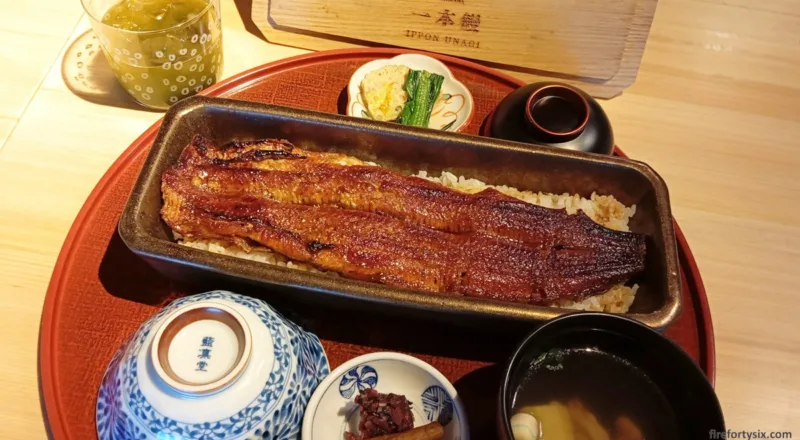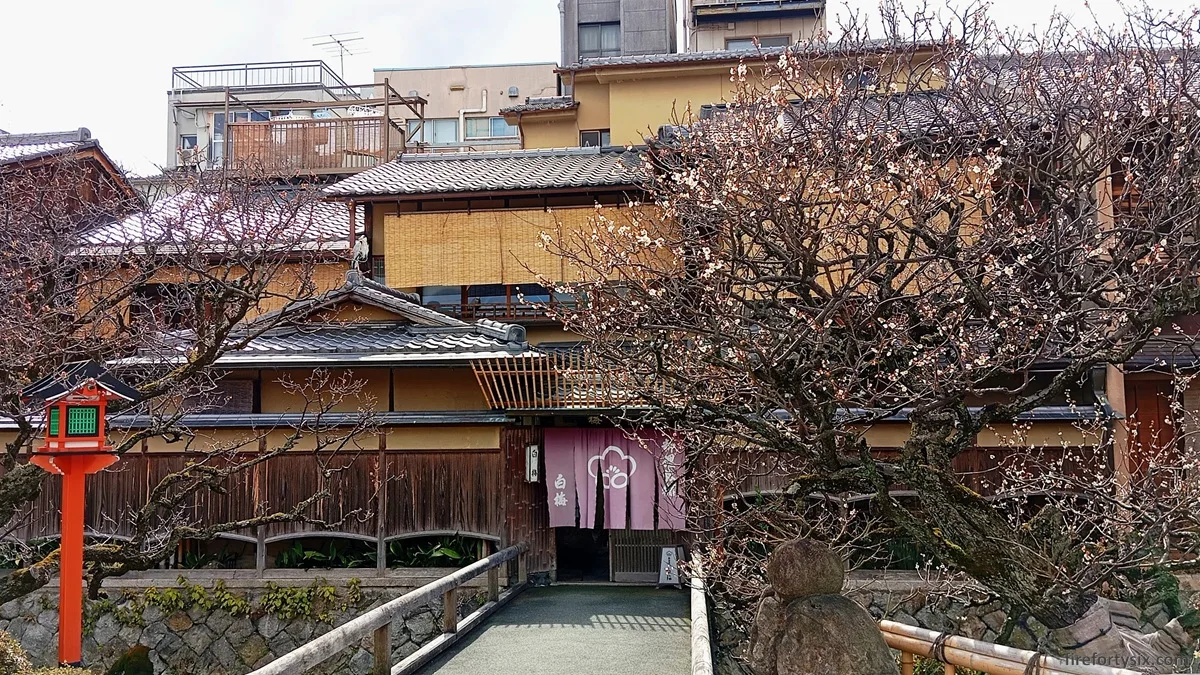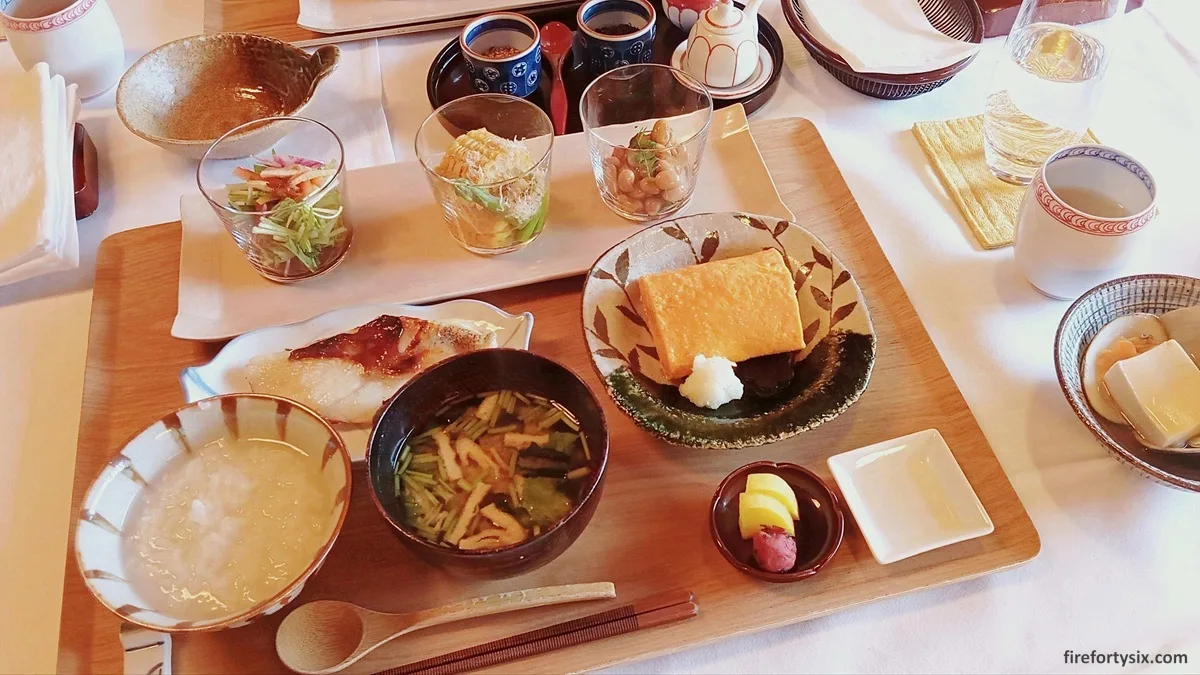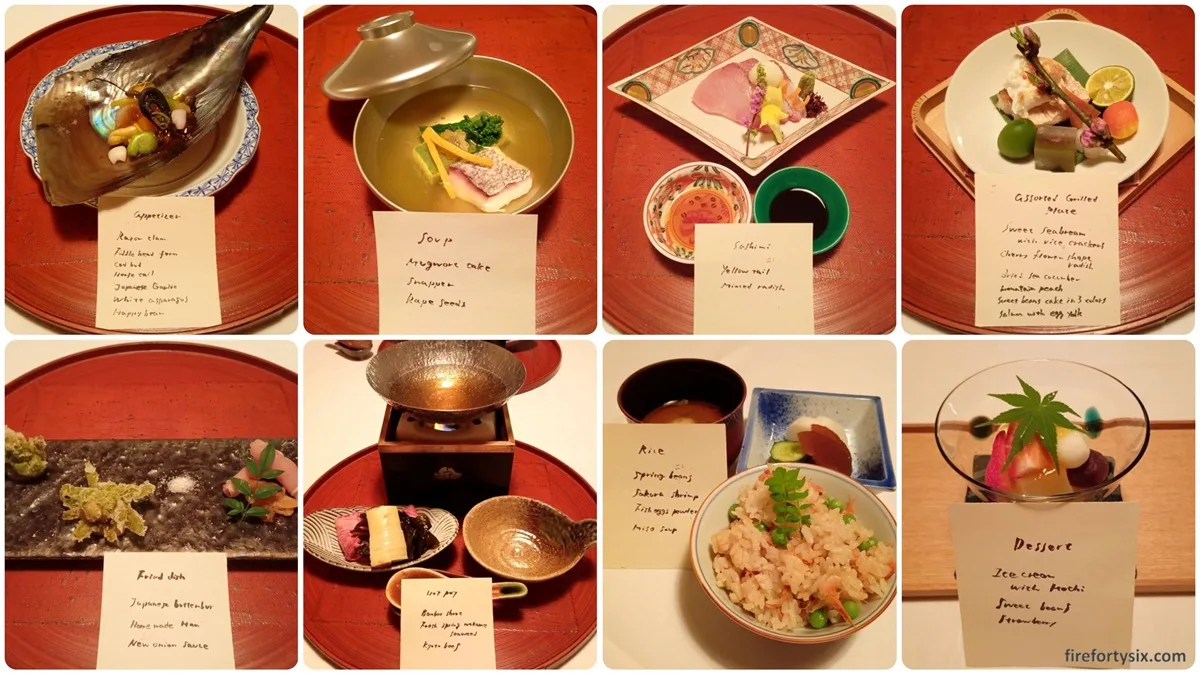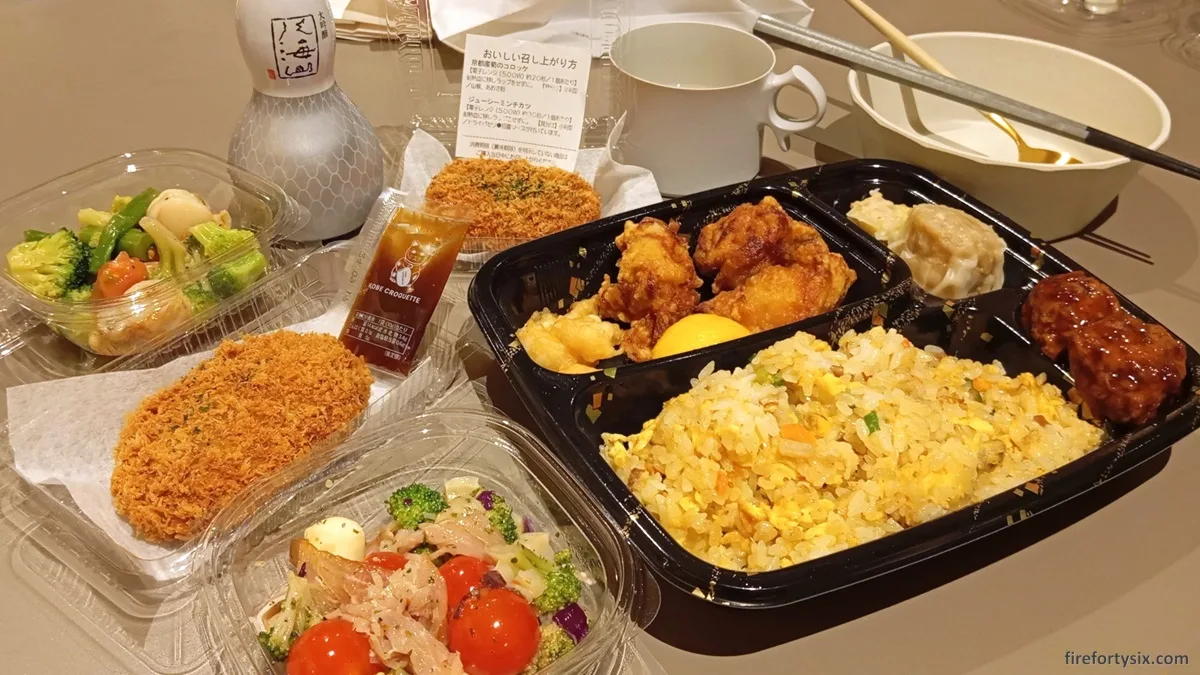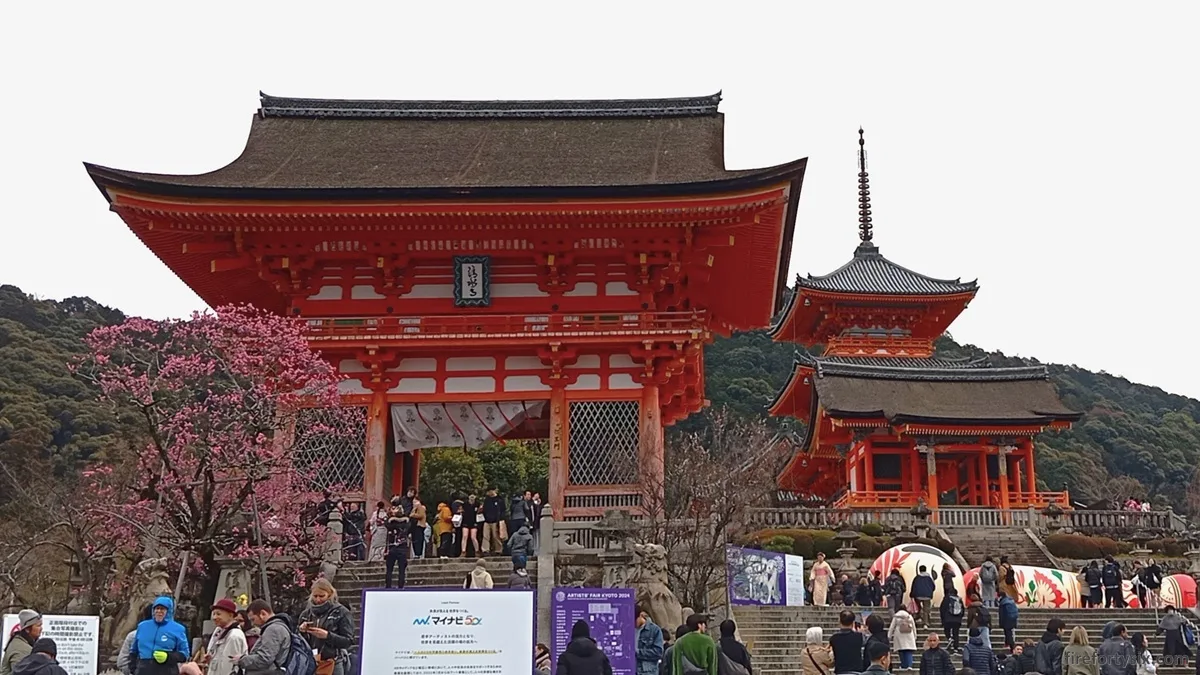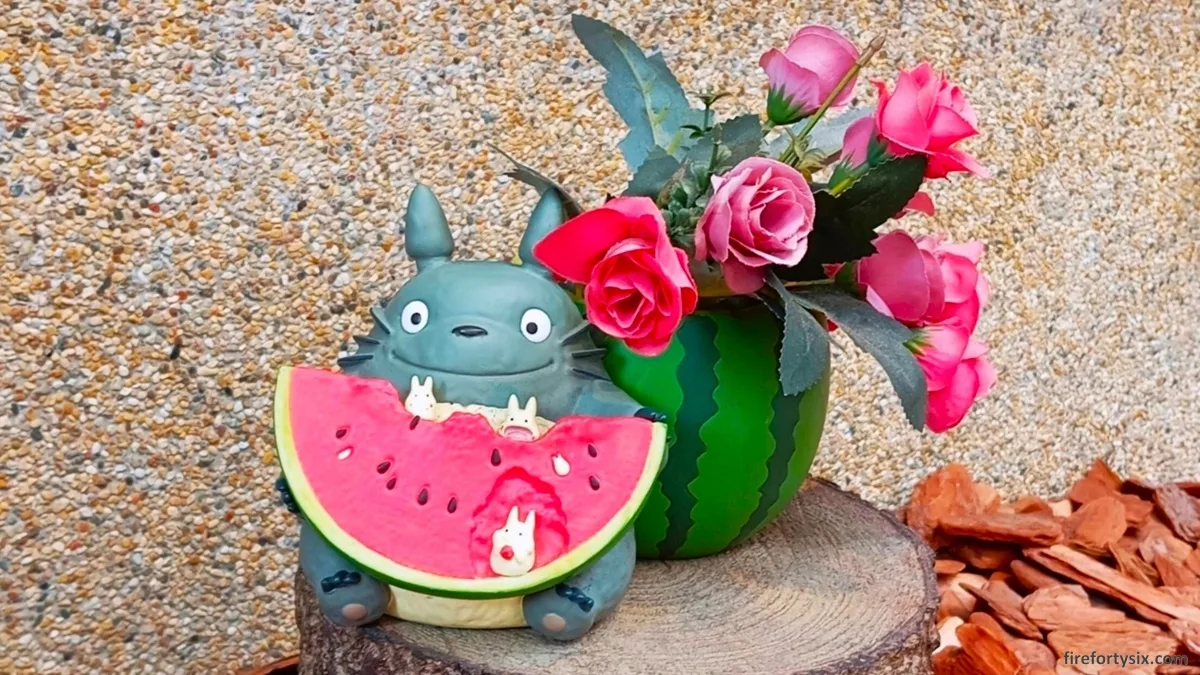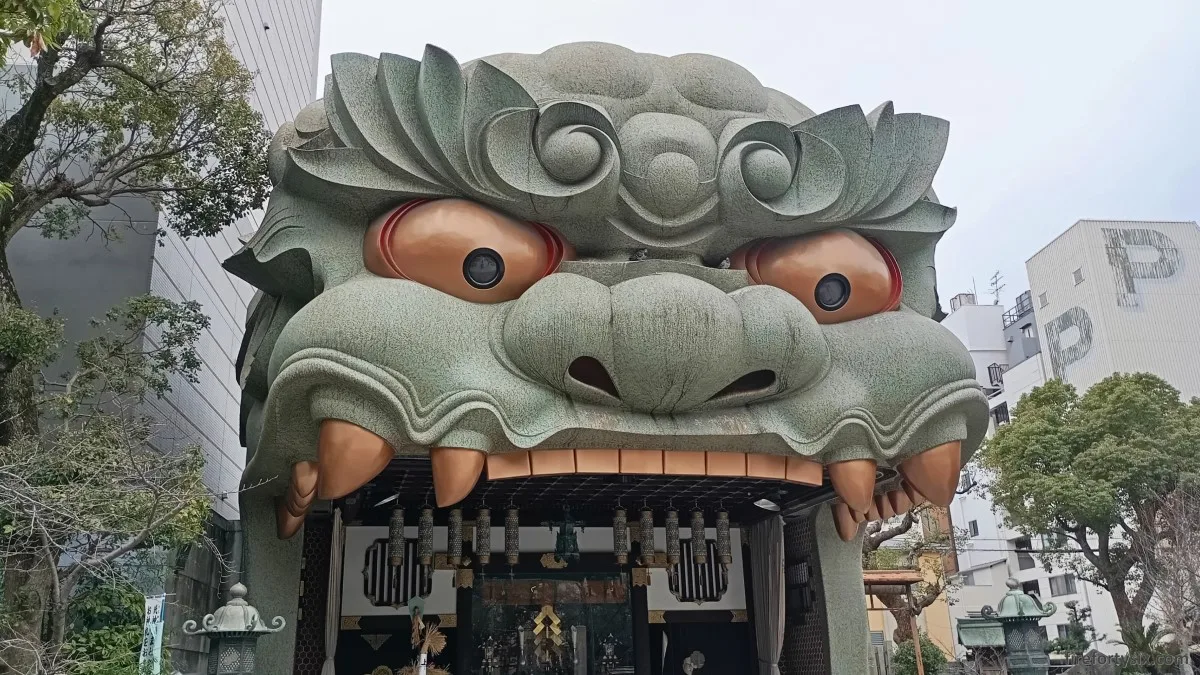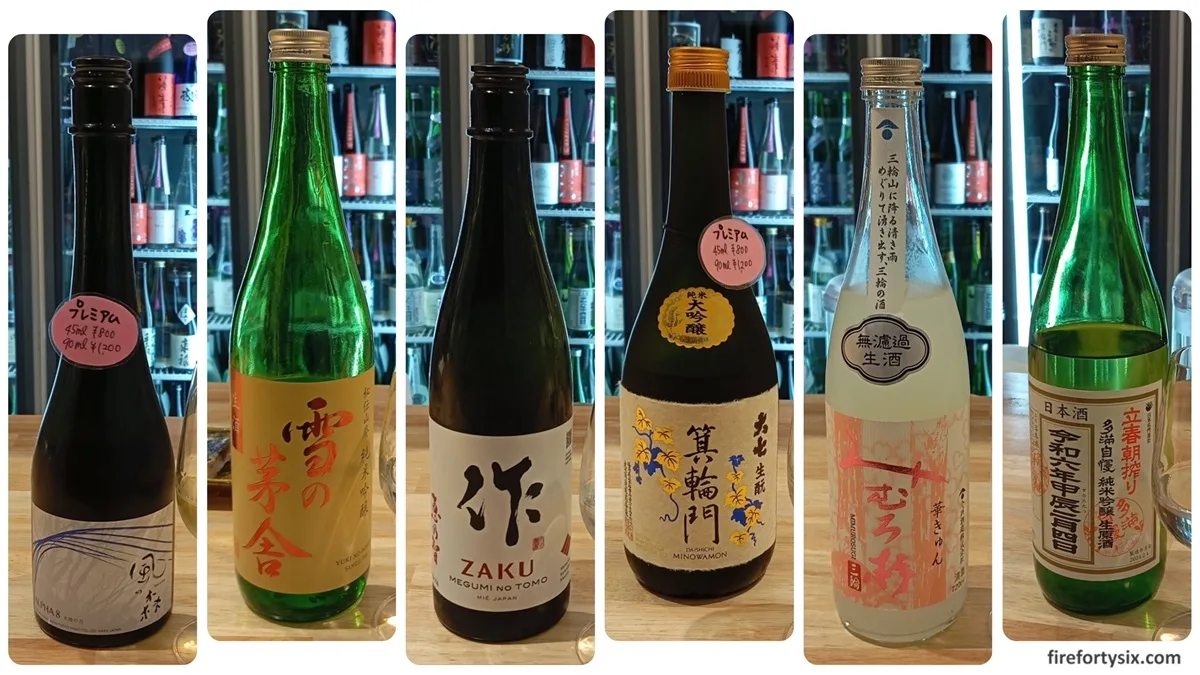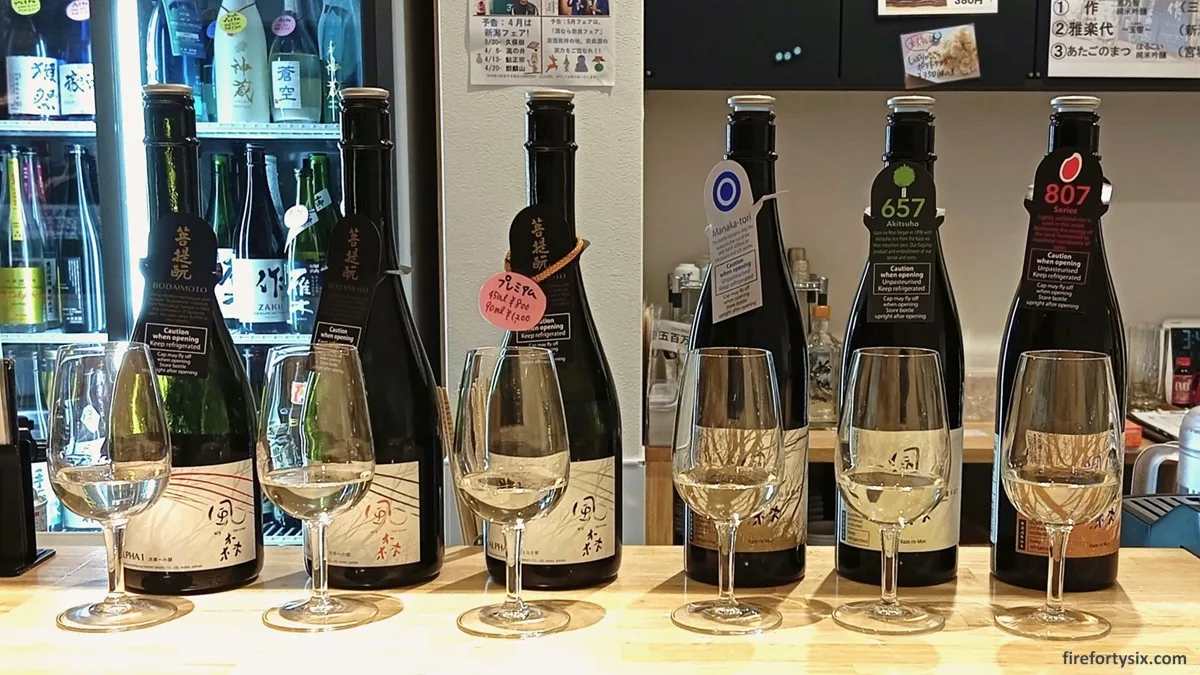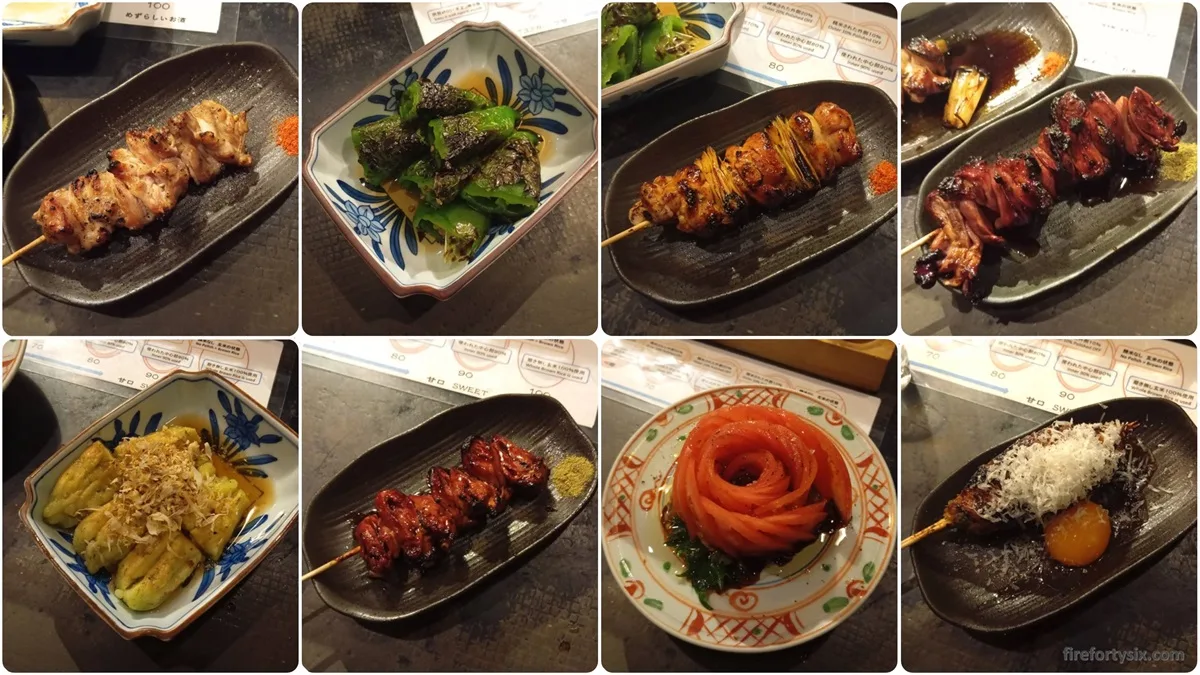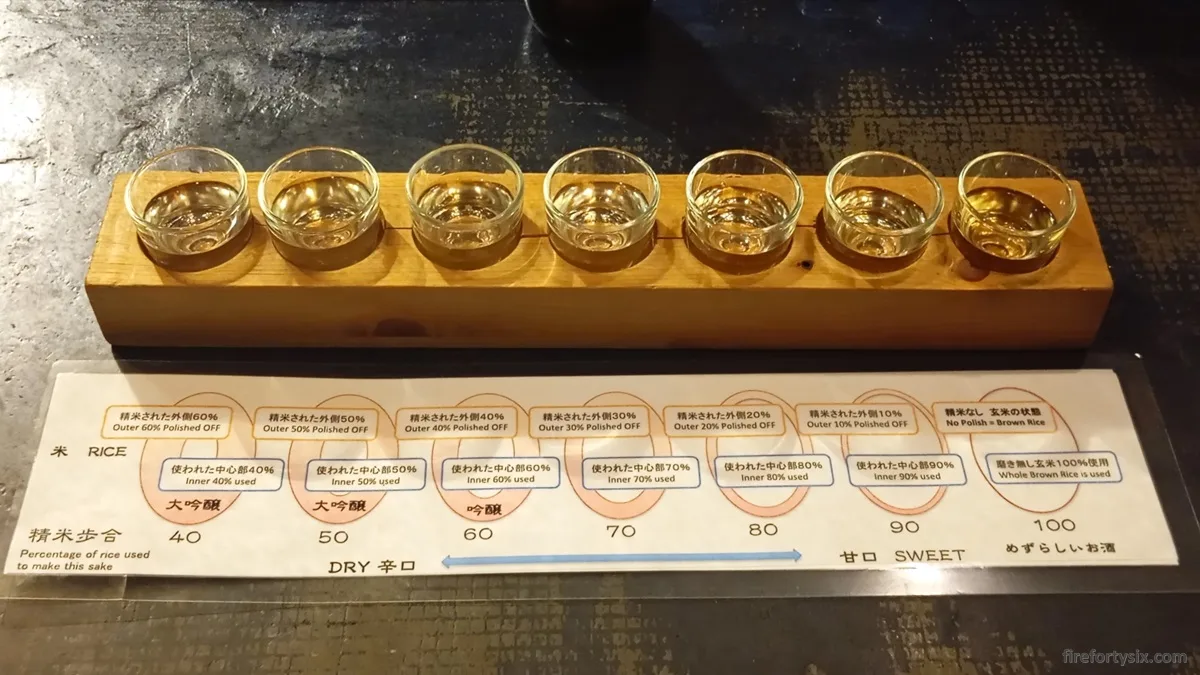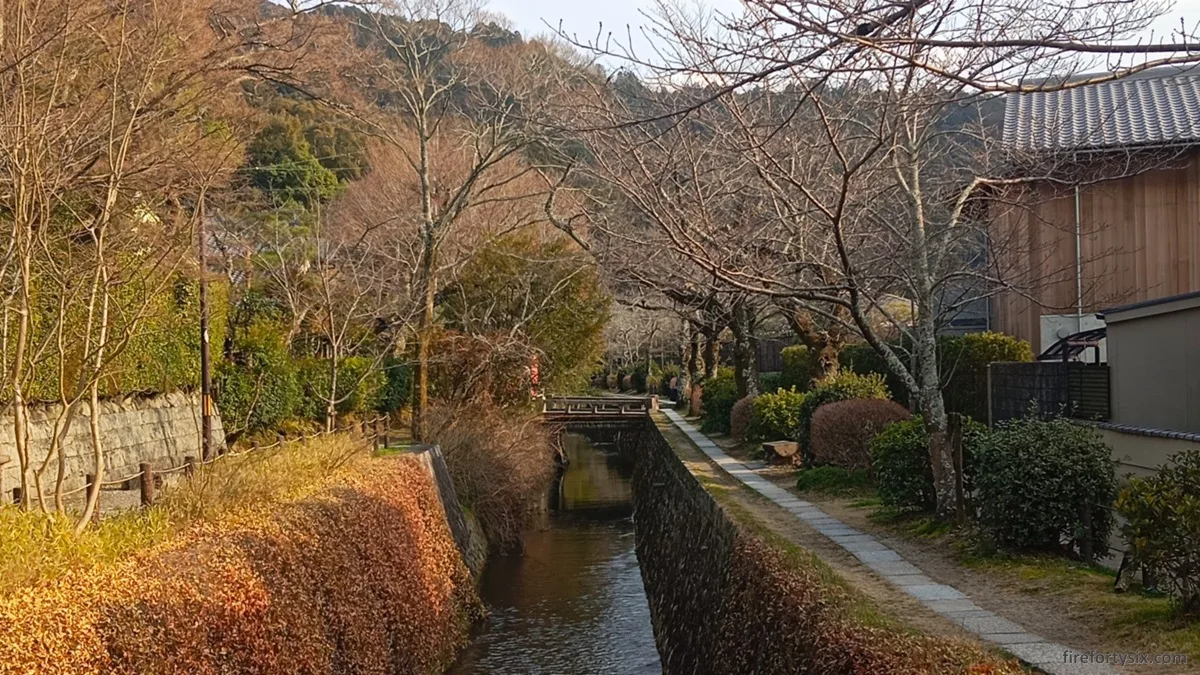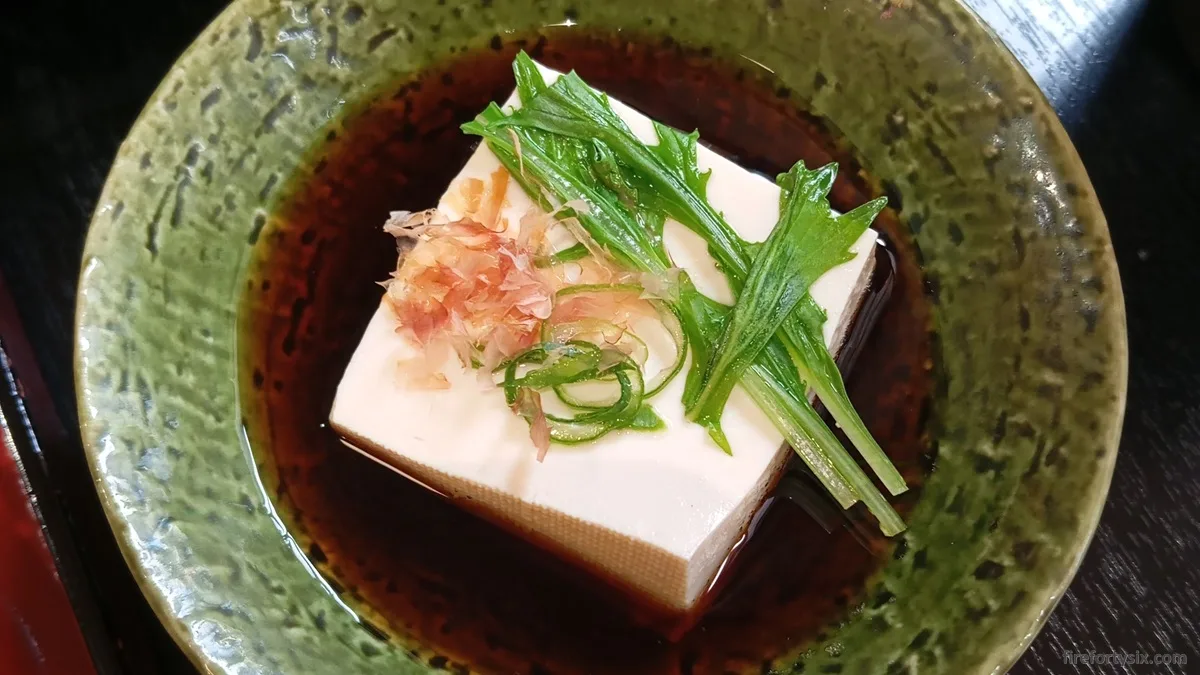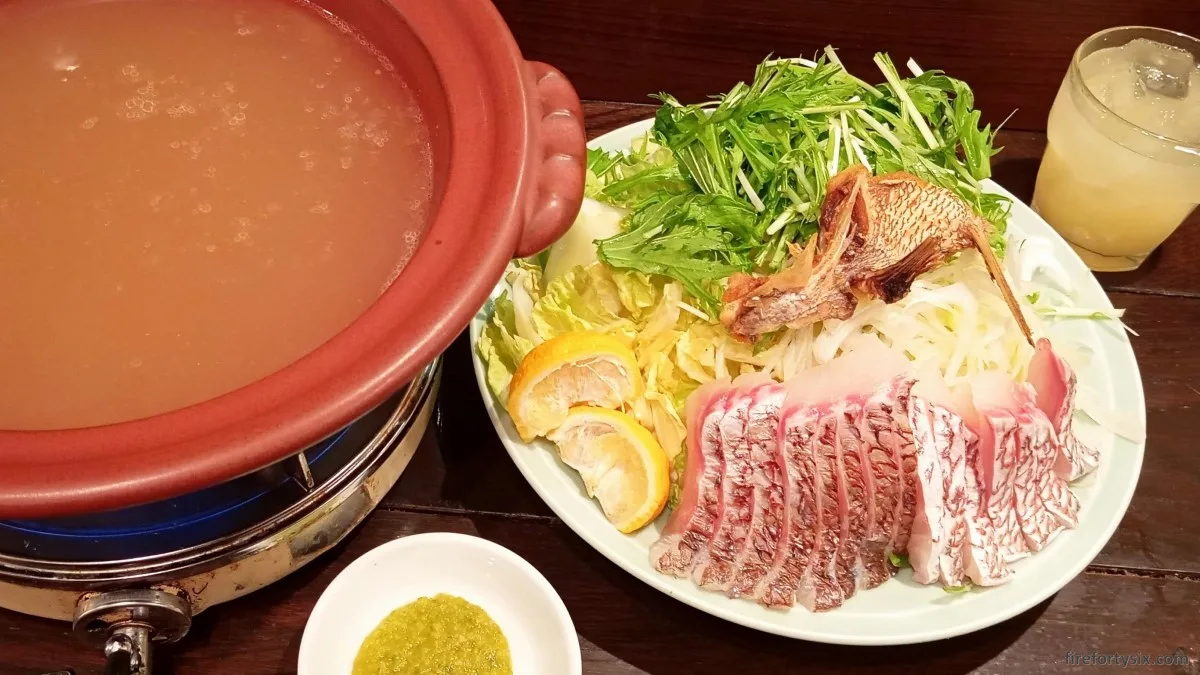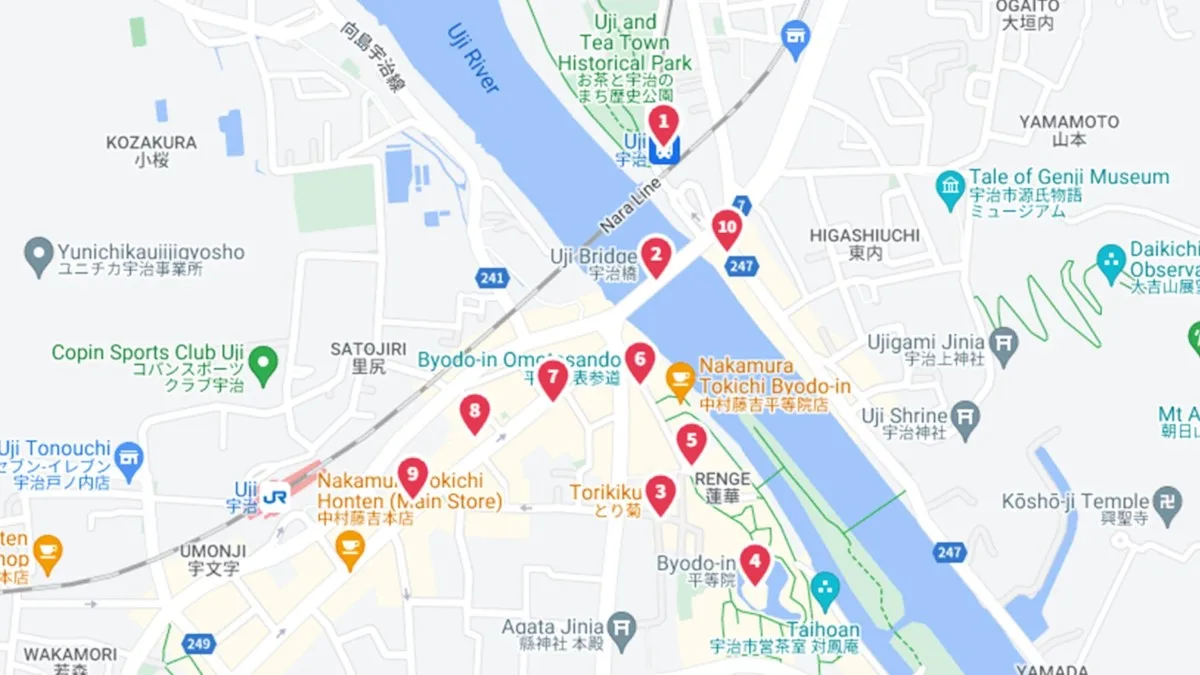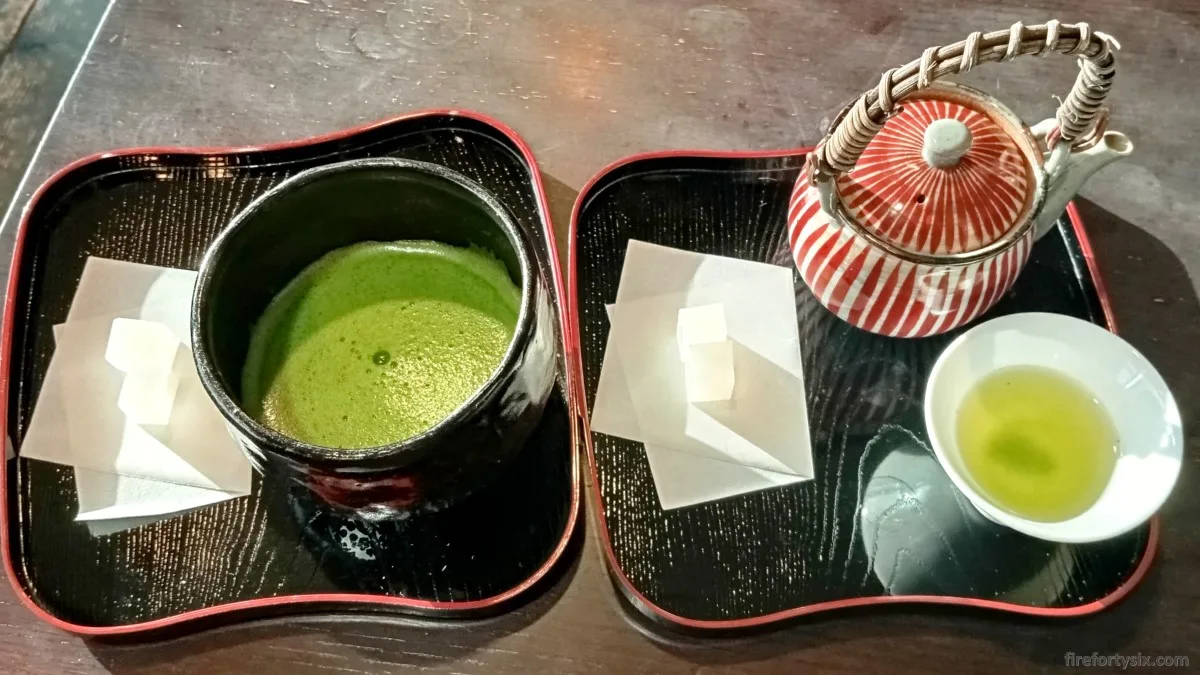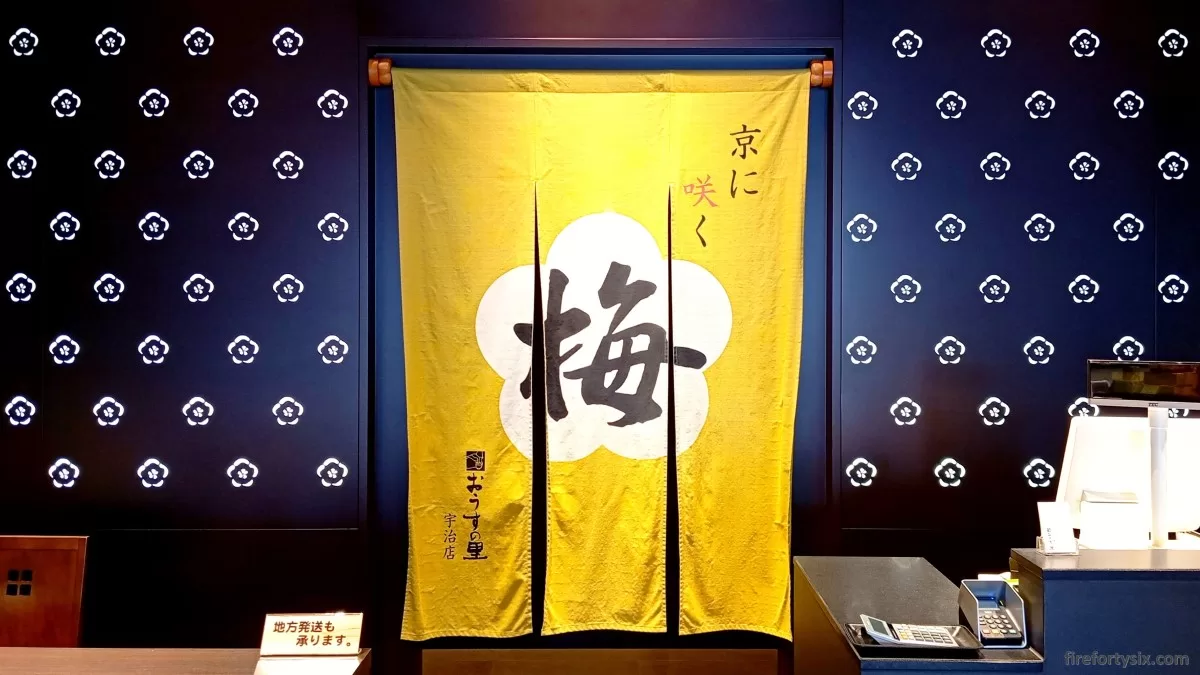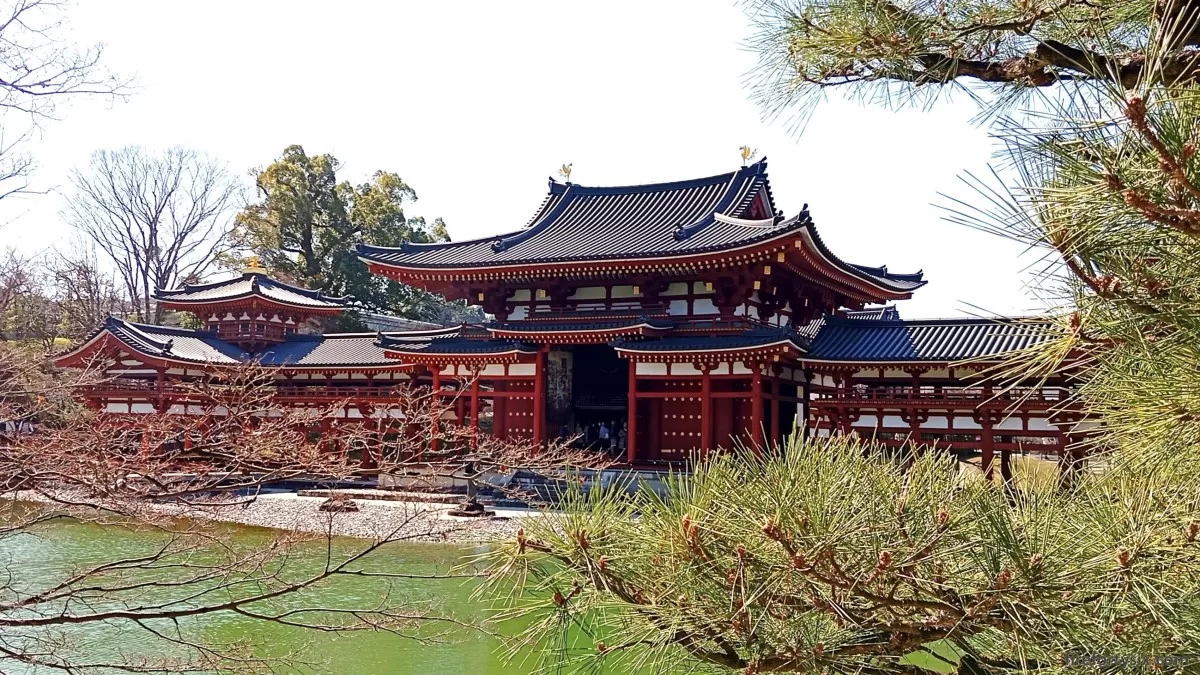Across the many years that I’ve visited Tokyo, I have easily eaten unagi kabayaki more than 20 times. It has become somewhat of a ritual to have it at least once on every trip.
Apparently, the Kansai and Kanto variations are quite distinct. But since I’ve only tried them in Tokyo, the opportunity to experience the difference has eluded me.
One significant divergence seems to be that, in Kanto, they’re first steamed before grilling. Whereas in Kansai, pre-steaming is skipped, resulting in a firmer and crispier texture.
During our previous trip to Kyoto, we didn’t get round to having unagi. This time though, we were determined not to make the same mistake.
There were so many restaurants that we didn’t know which to choose. Thankfully, we were able to rely on the expert judgement of Tomoko-san, the owner of the ryokan that we had just checked into.
“Please follow me,” she beckoned gracefully, before leading us down several small streets in the traditional geisha district of Gion.
When we reached a weathered but well-maintained machiya, she elegantly slid open the wooden door and gently gestured us to enter.
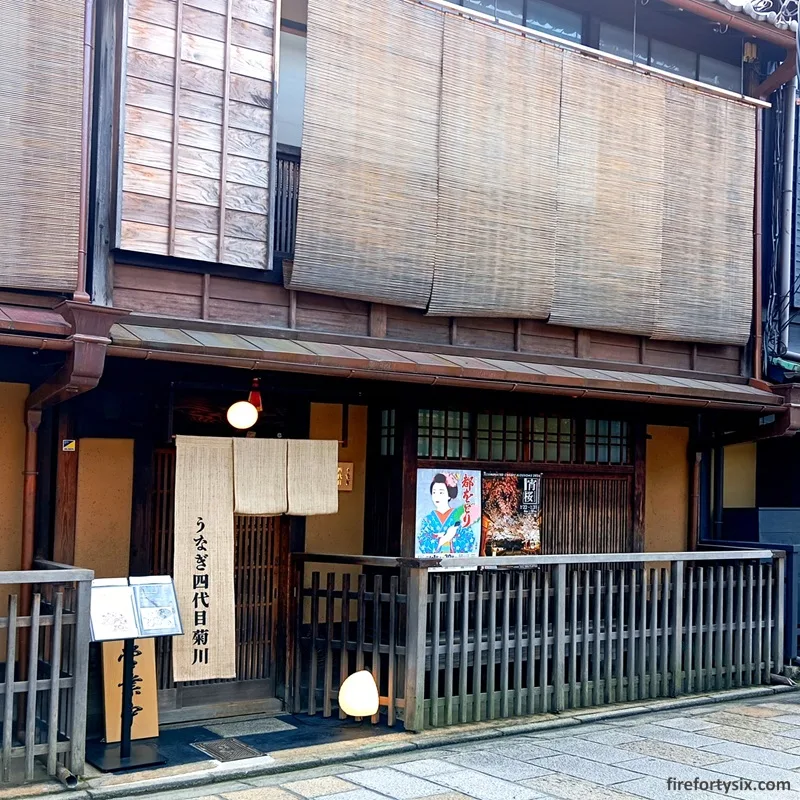
Tomoko-san introduced herself to a prosperous-looking man at the cashier counter. He bowed deeply and gave a long reply in a hushed and respectful tone.
It was all in Japanese, but it was clear that Tomoko-san was highly respected in the neighbourhood. She left us in his good hands, and went about her day.
We knew, then and there, that we’d be treated well for the next two hours.
Ota-san personally escorted us up a small flight of stairs and handed us off to his kimono-clad colleague on the second floor.
As instructed, we took off our shoes and were politely ushered to our table in a cosy room with tatami mats, warm lighting and Muji-esque furniture.
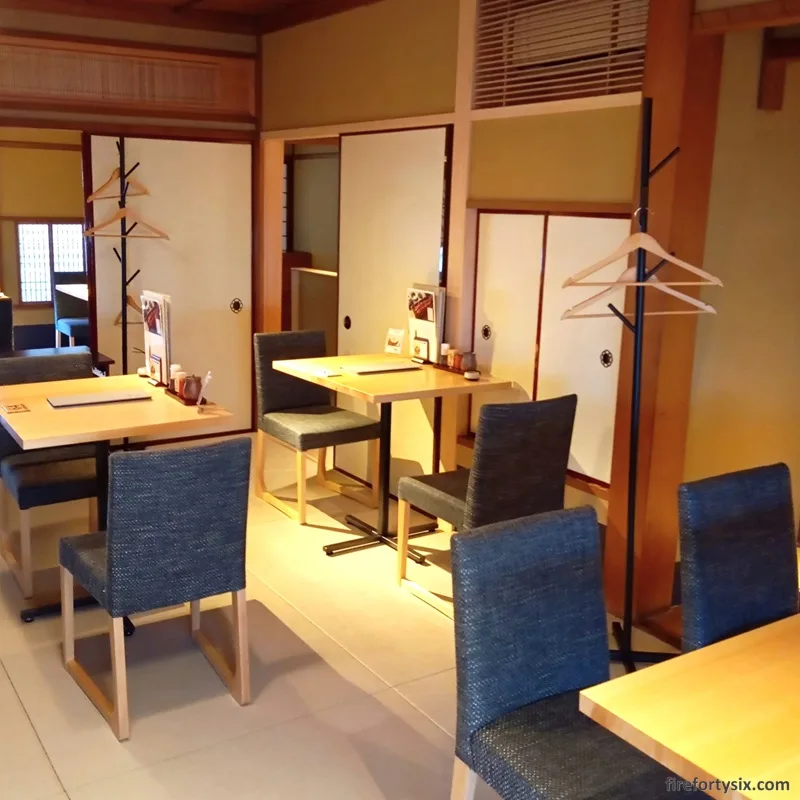
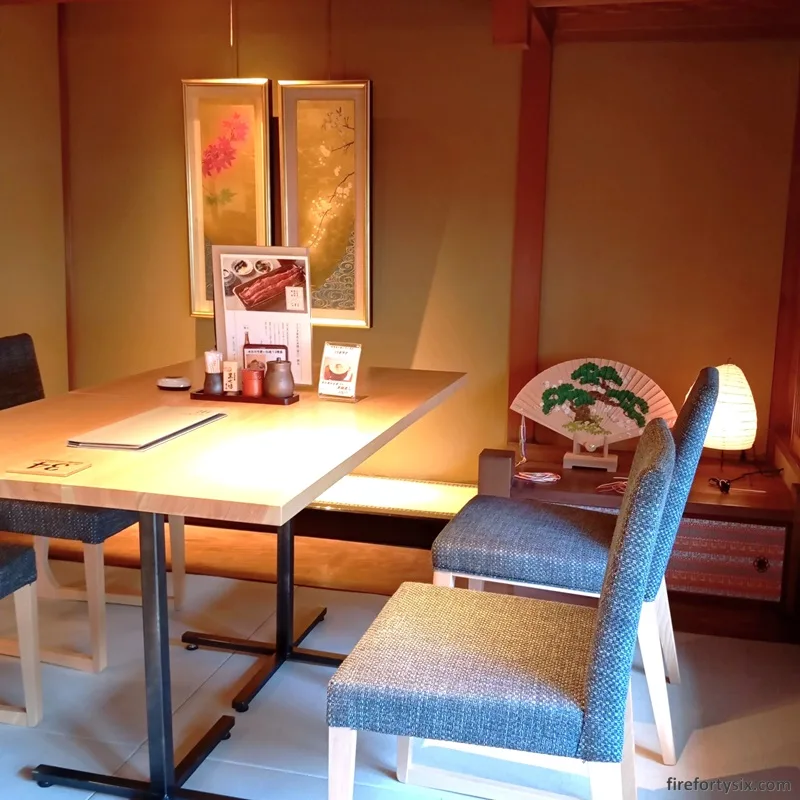
The heavy menu was simple but classic, with only うなぎ 四代目 菊川 (Unagi Yondaime Kikukawa) on its cover, printed vertically from right to left.
Inside, the initial pages were dedicated to the store’s history, philosophy and technique. Details were shared on the sourcing, storage, preparation, grilling, saucing and plating of their eels.
An entire page was dedicated to their signature dish, the Ippon Unagi (一本うなぎ), where an entire eel is expertly filleted, grilled and served whole in custom-made crockery.
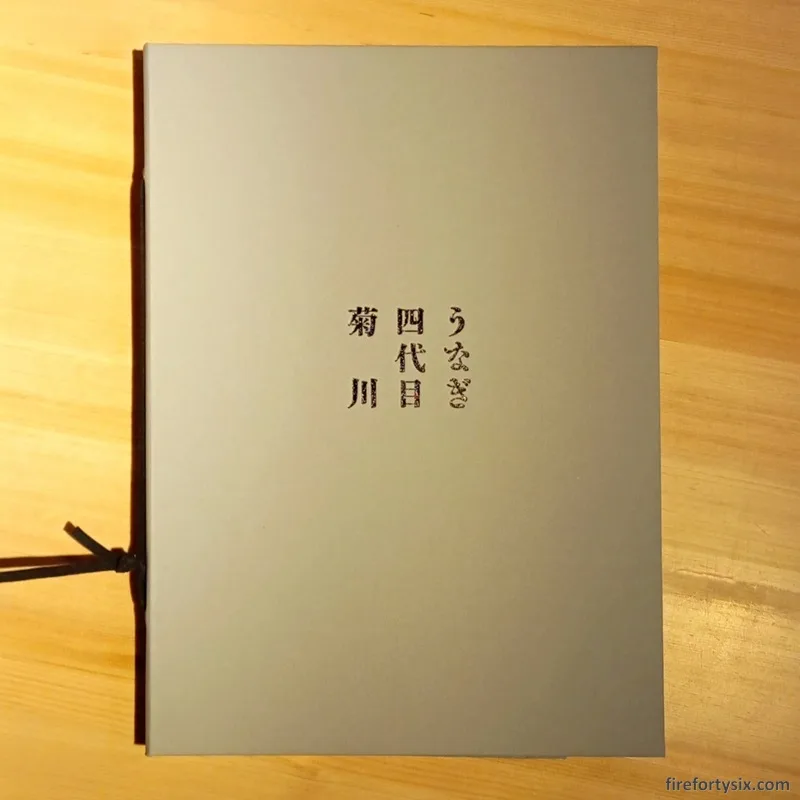
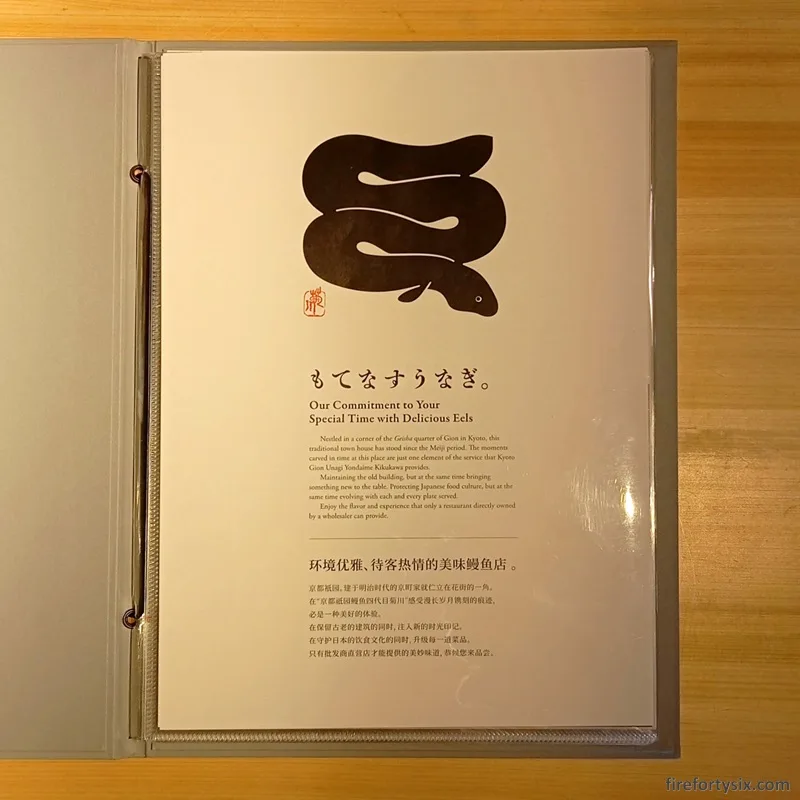
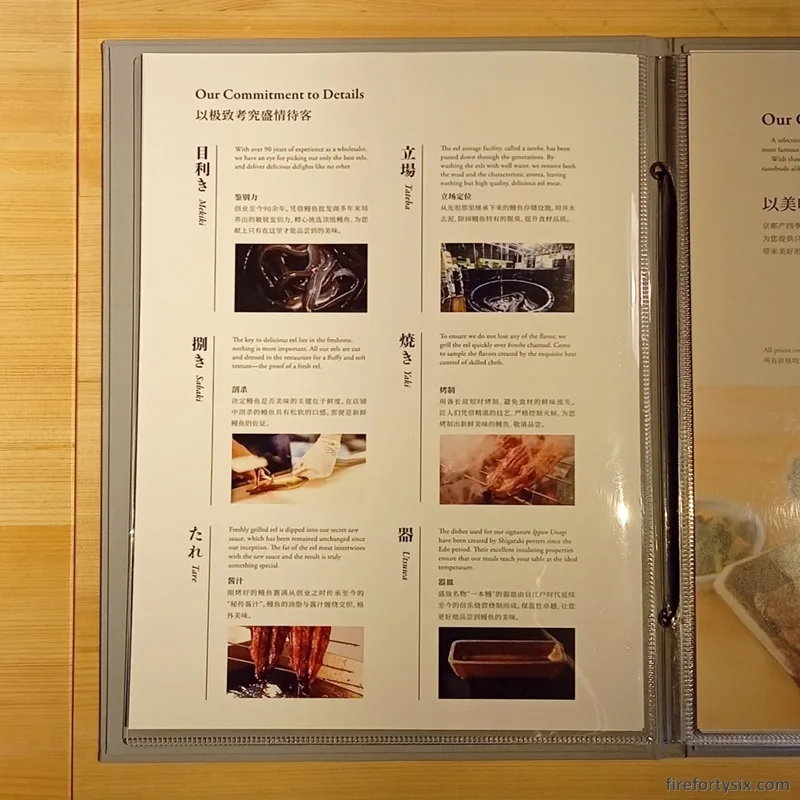
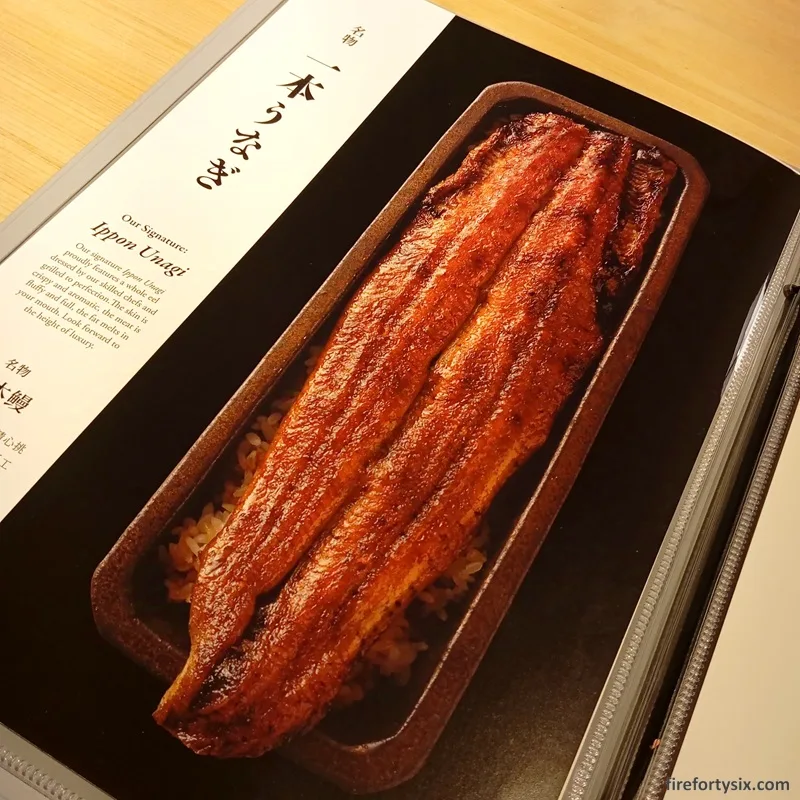
After admiring the full page feature, there was no doubt in our minds what we were going to order.
The only decision that had to be made was whether to go with the straightforward Una-ju (unagi on rice), or the more involved Hitsumabushi (unagi three ways).
Naturally, we dealt with the dilemma by ordering one of each.
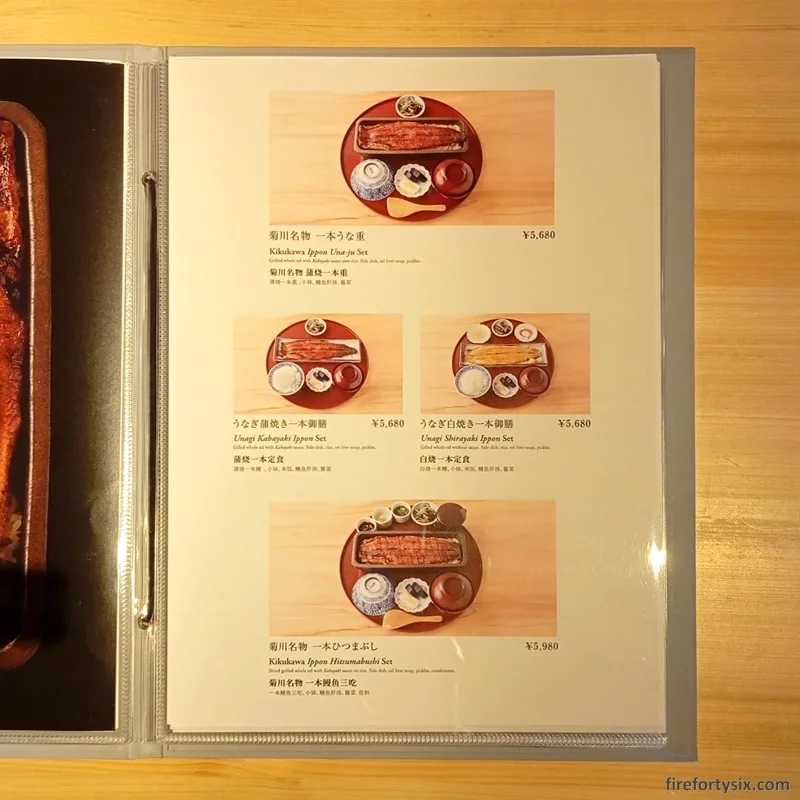
A small acrylic plaque on our table featured a seasonal winter chawanmushi. Only 15 were available on any given day, and of course we had to get it.
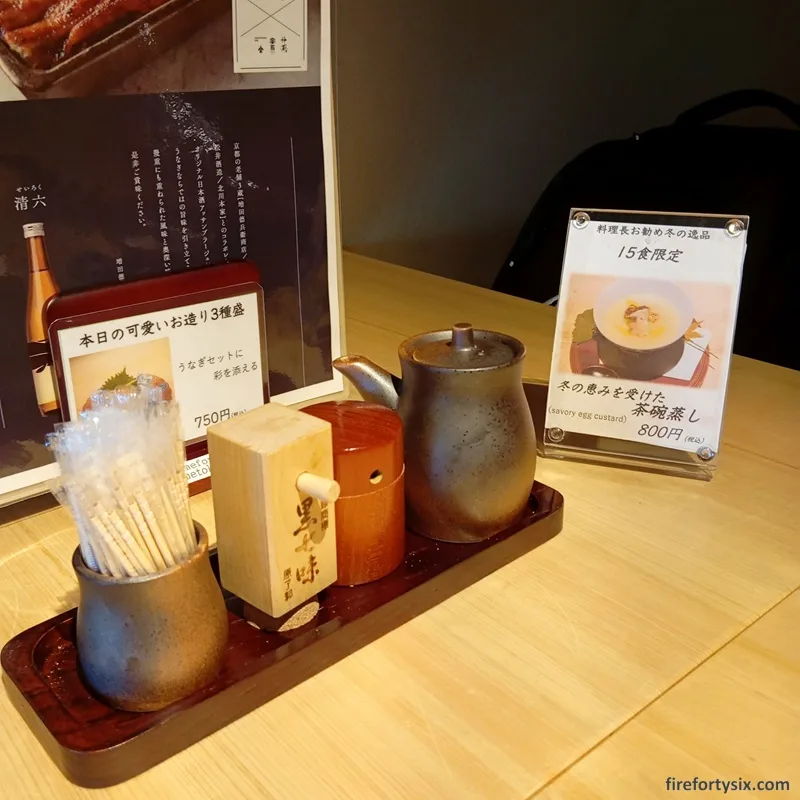
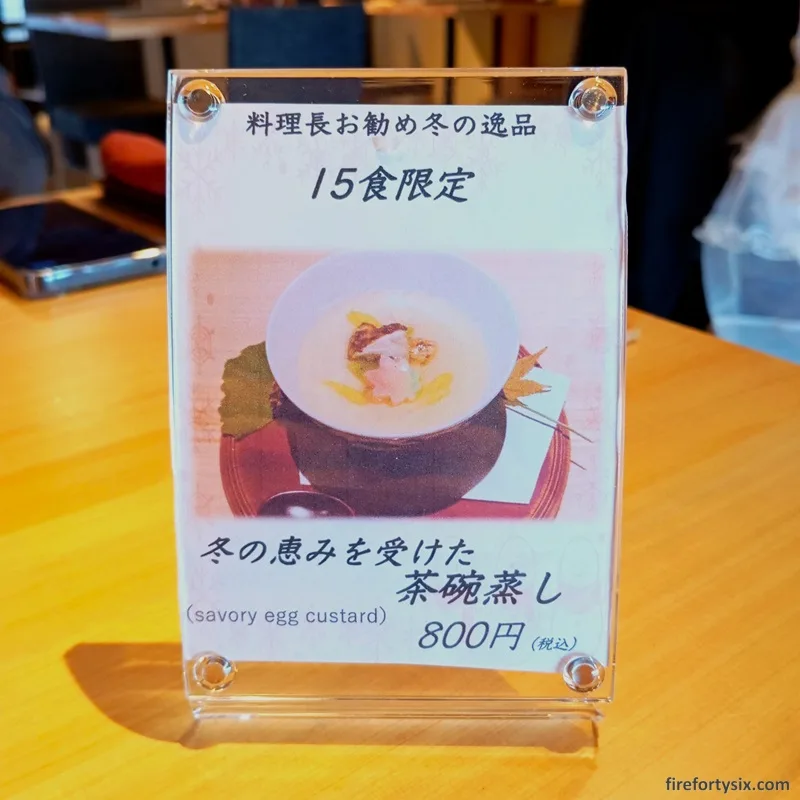
But first, sake.
Or more specifically, an ichigo (一合) of the Tsuki no Katsura (月の桂) “Yanagi” (柳) Junmai Ginjo (純米 吟醸).
It was fragrant, smooth and slightly dry with a good body. I was quite sure that it would go well with the rich-tasting unagi and kept most of it to pair with food.
The Wife decided on umeshu, and she ordered a glass of the Uji matcha version, on the rocks. She quite enjoyed the pleasant bitterness that matcha imparted to the tart plum wine.
I took a small sip from her glass, and was instantly reminded why umeshu sucks is not my cup of tea.
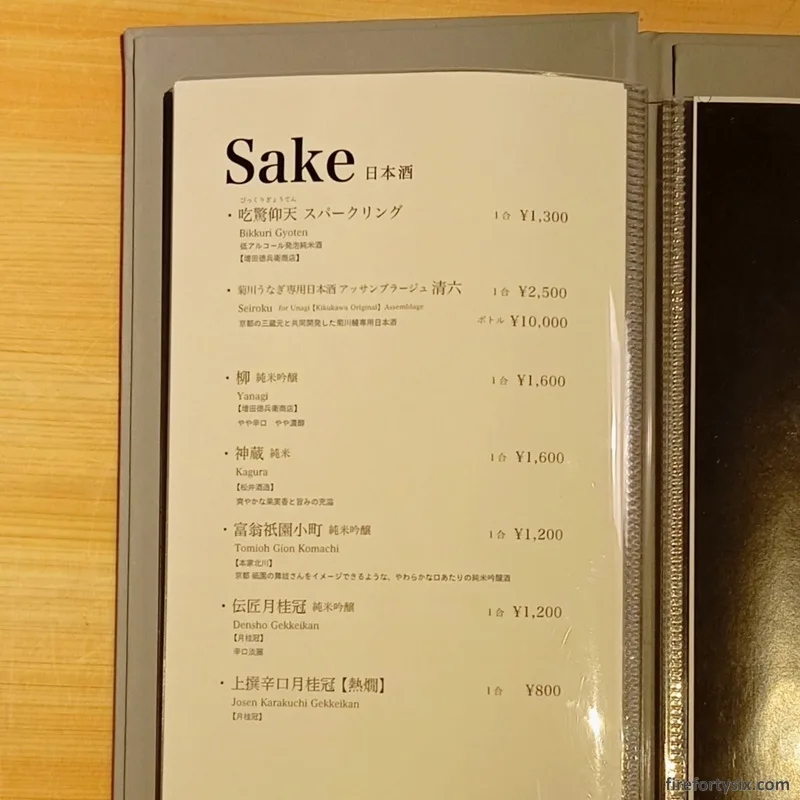
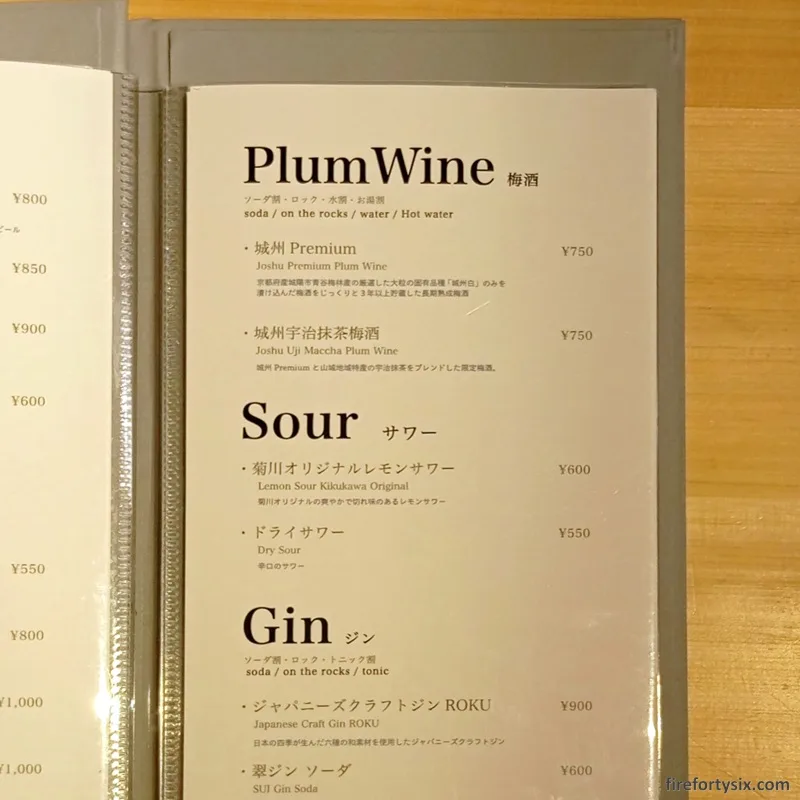
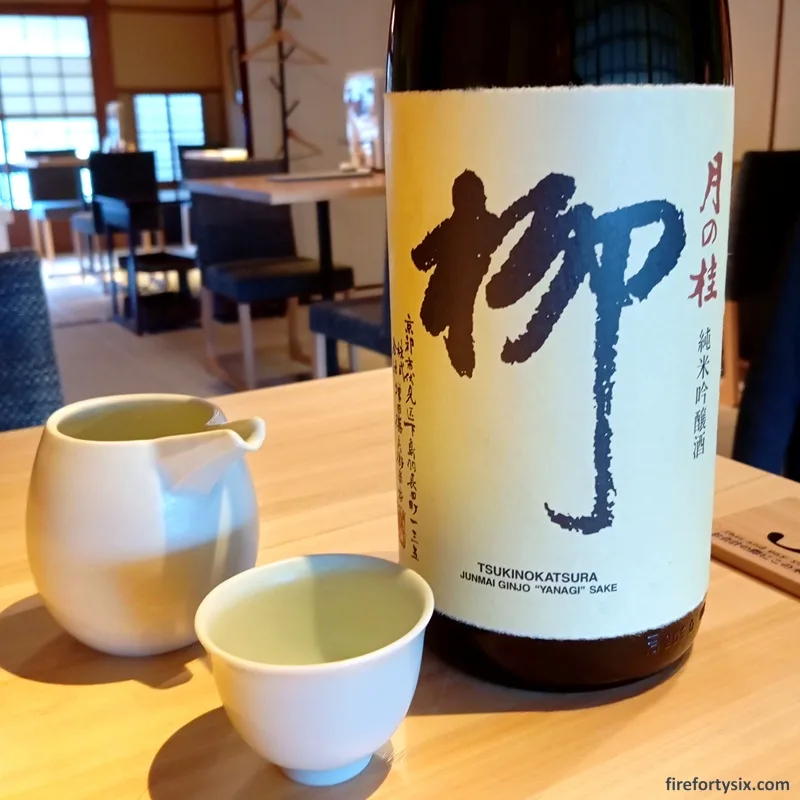
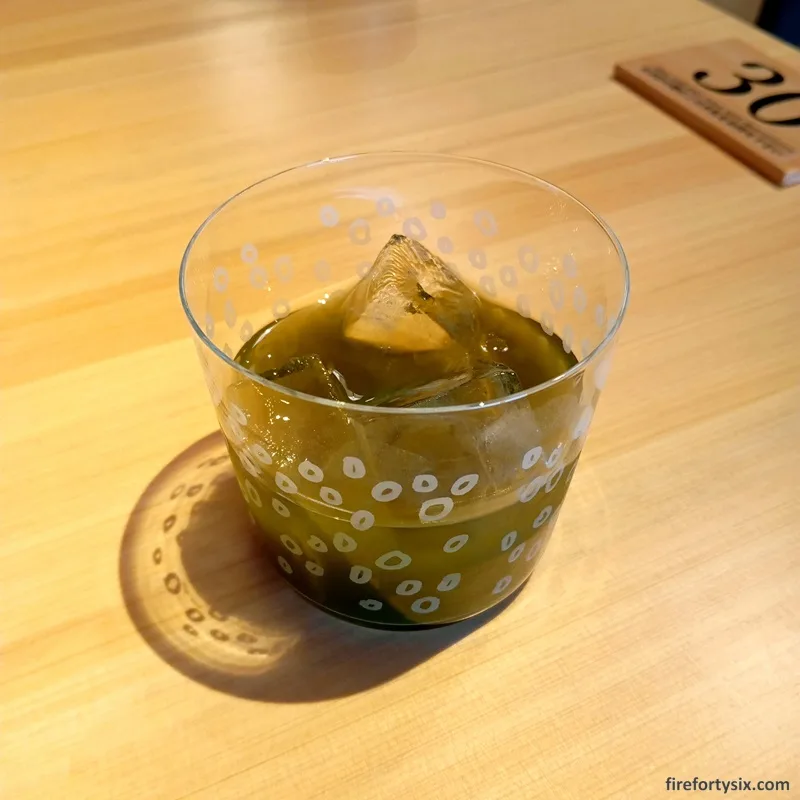
Our “limited edition” chawanmushi arrived in a porcelain teacup resting on a wooden saucer.
It was garnished prettily with sprigs of mitsuba, a sakura-shaped kamaboko and a crunchy, gelatinous substance that resembled shark’s fin.
I doubt it was that given the relatively low ¥800 price point, and also the fact that shark’s fin is not an ingredient commonly used in Japanese cuisine.
A chunky piece of seabream was hiding underneath the surface of the steamed egg custard, together with a couple of gingko nuts.
The ensemble provided a warm and comforting prelude to the highly anticipated main course that was to come.
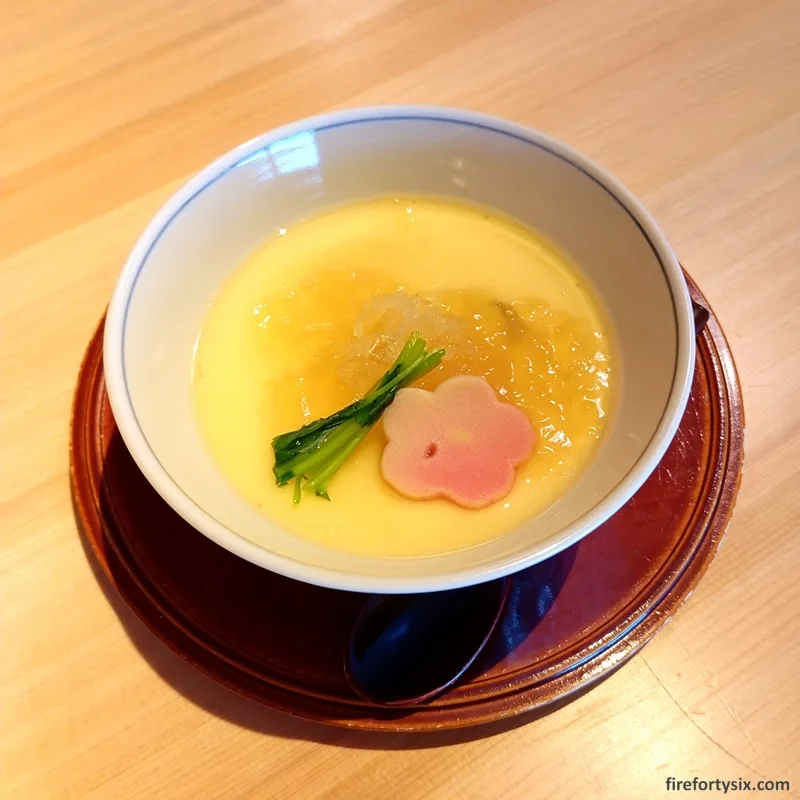
They say that we first eat with our eyes. Or, in this age of smartphones and social media, a more accurate expression would be “the camera eats first”.
Either way, what arrived on our table scored a 10 out of 10.
A long heavy rectangular clay bowl was served covered, with a long pair of chopsticks and a small wooden paddle resting on top.
Removing the top revealed an entire fillet of unagi kabayaki, beautiful and unbroken. Followed by a waft of steam that carried the alluring aroma of freshly-grilled eel that came off a charcoal fire just minutes ago.
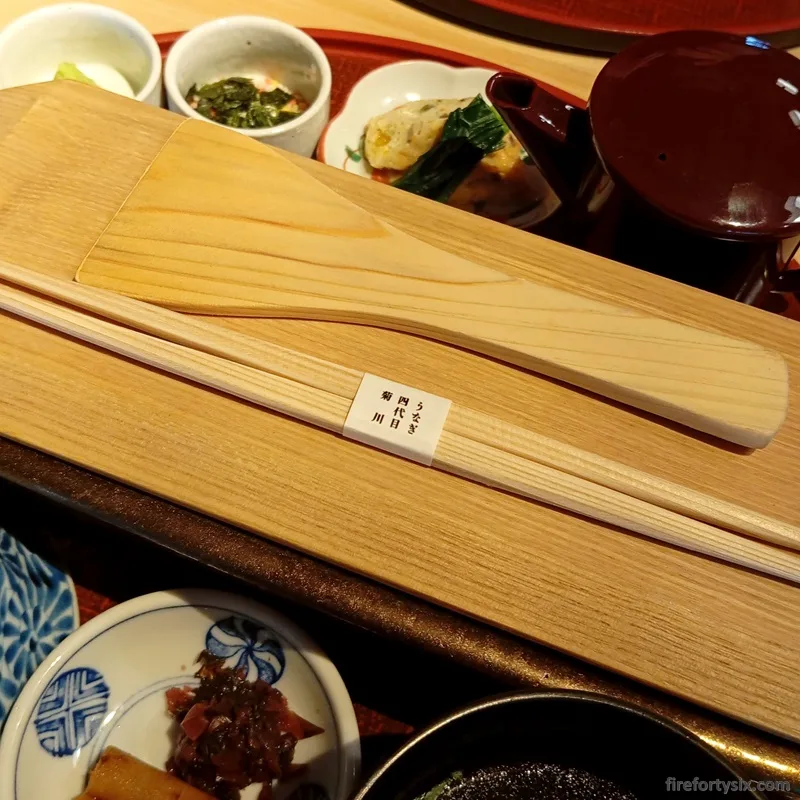

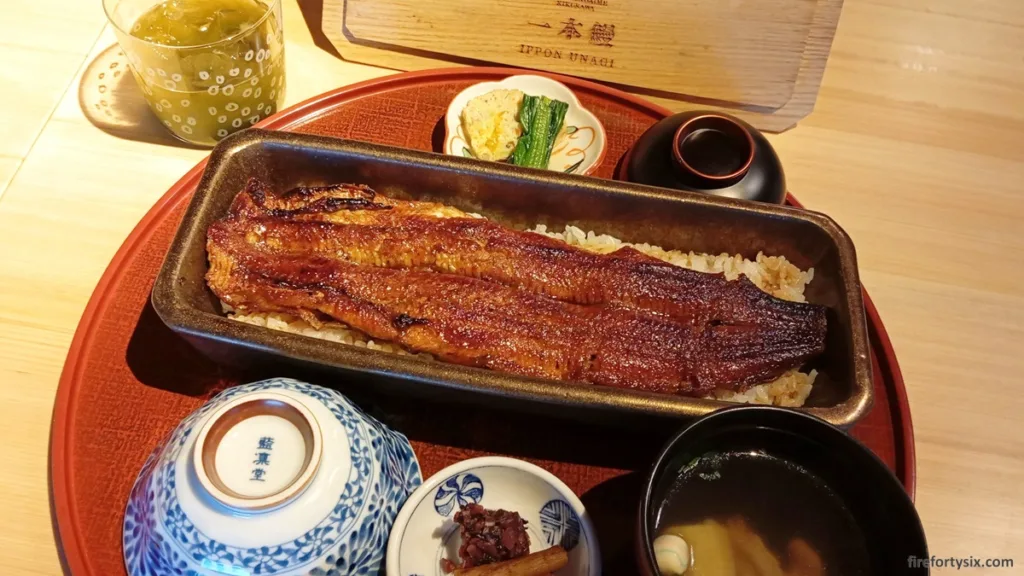
Accompanying my Una-ju were small dishes of appetisers and pickles, as well as a clear soup with eel liver and yuba.
I’ve had my fair share of eel liver and prefer them dipped in tare and grilled. Soft and creamy with some chewy bits at the end, this simply boiled piece was so good that it almost made me change my mind.
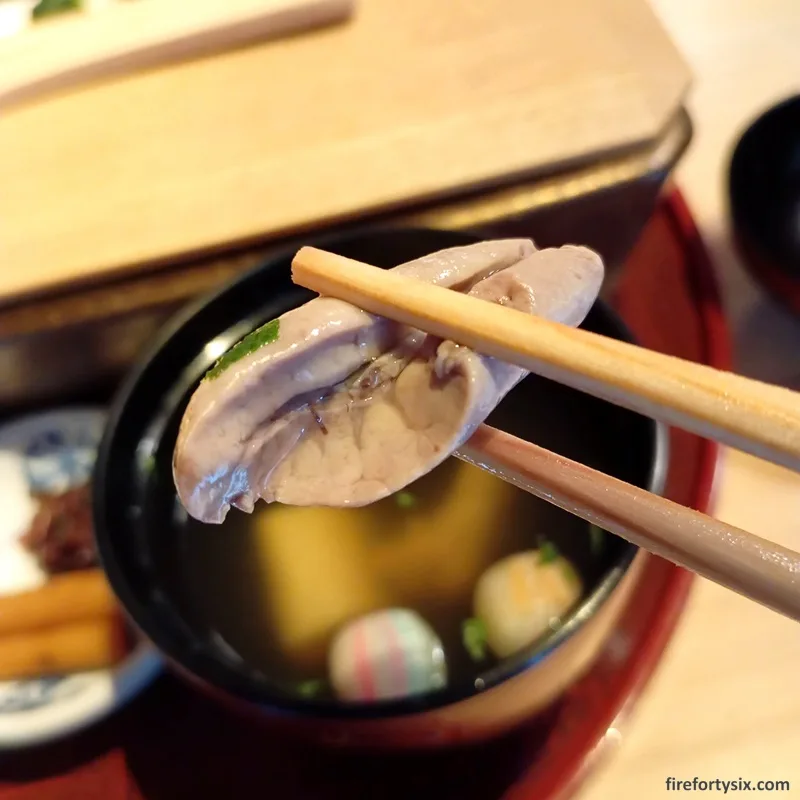
My Ippon Unagi had been patiently waiting for me, and after admiring it one last time, I picked up the small wooden paddle and dug right in.
As expected, the Kansai-style grilled eel was dryer and crispier than its counterparts in Tokyo.
The flavour of the sweet and savoury tare was also more robust, though it was careful not to overpower the natural flavour of the fish.
After having my first piece as-is, I sprinkled on some sansho pepper and found that its spicy kick added an exciting dimension to the overall flavour of the dish.
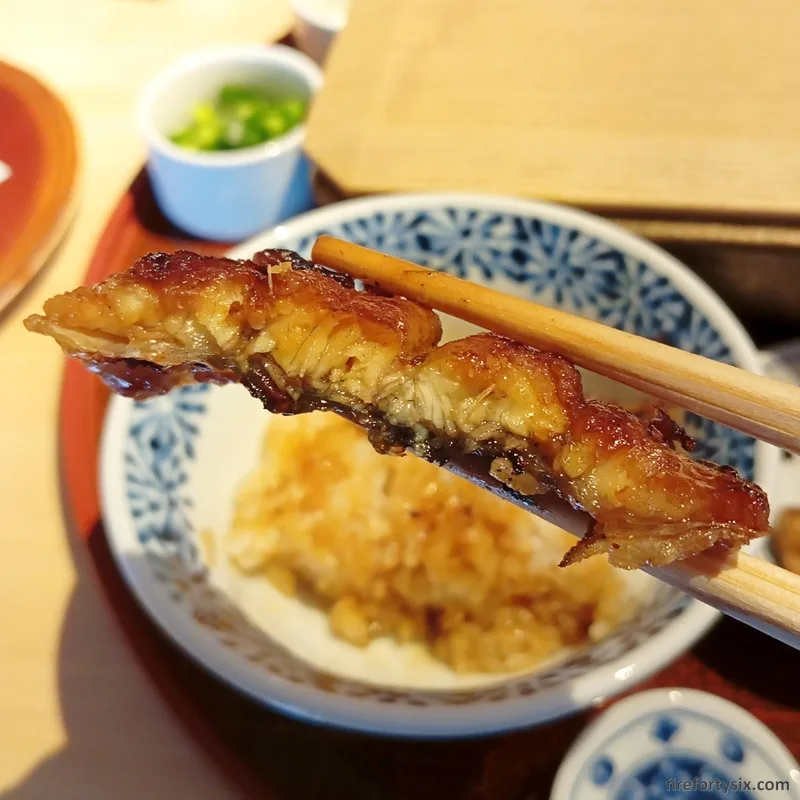
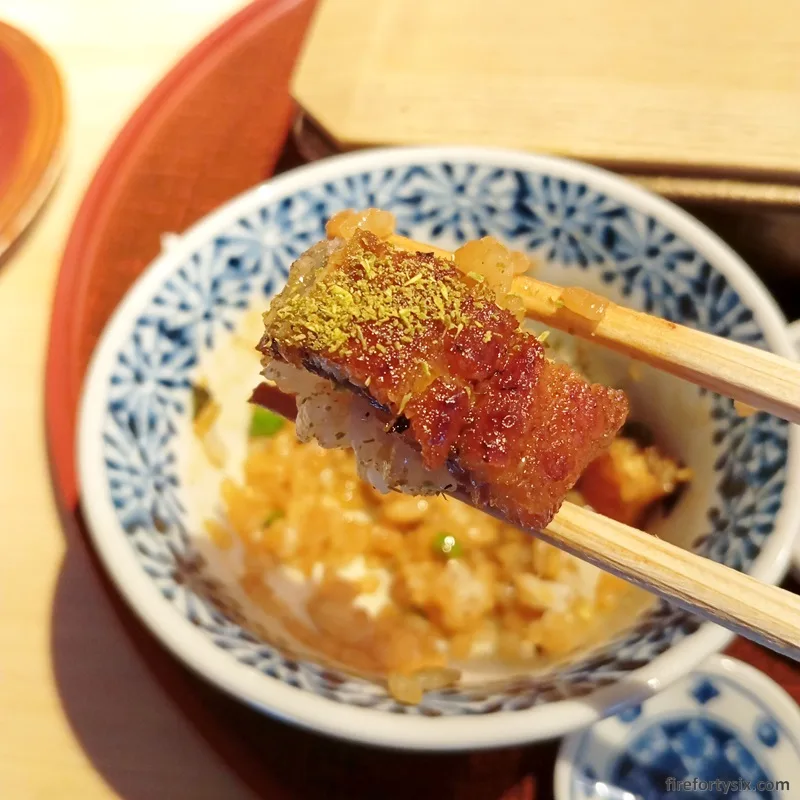
The Wife’s Hitsumabushi came with instructions. They were a bit verbose and slightly pedantic, so here’s my shortened version:
- Serve in a bowl, mixing the eel and rice well.
- For the second bowl, repeat Step 1 but add condiments (nori, wasabi, green onion) and mix well.
- For the third bowl, repeat Step 2 but add dashi chazuke (Japanese soup stock) and mix well.
Since she’s had Hitsumabushi more than a dozen times, she didn’t need any guidance and relied purely on muscle memory.
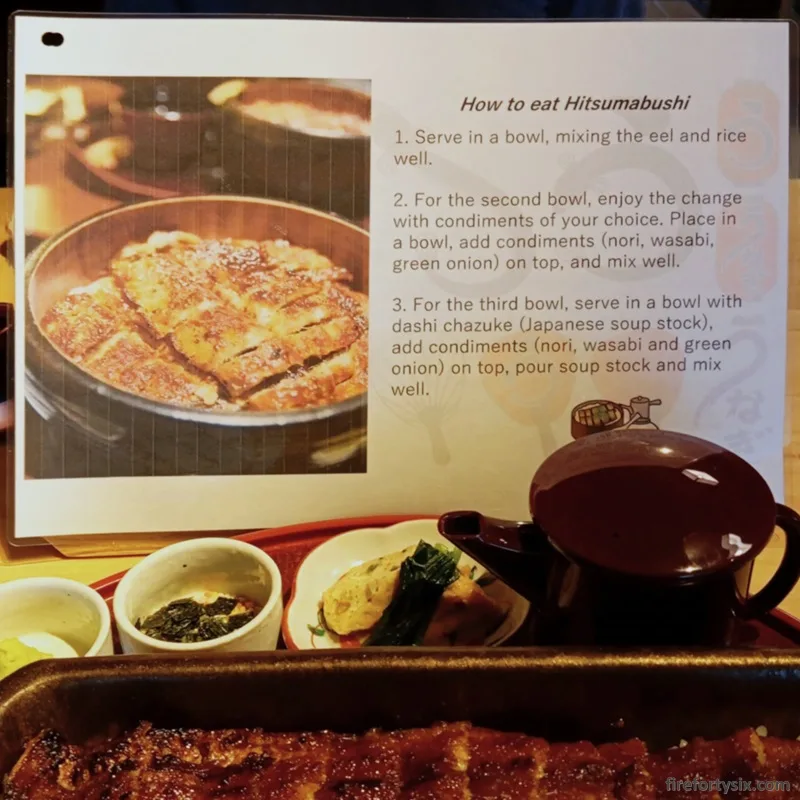
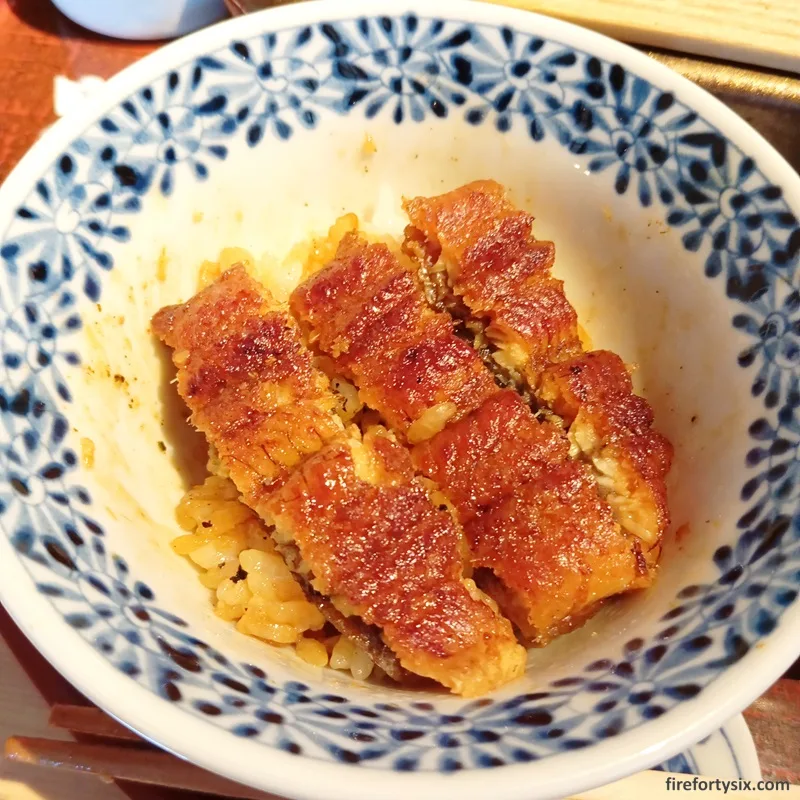
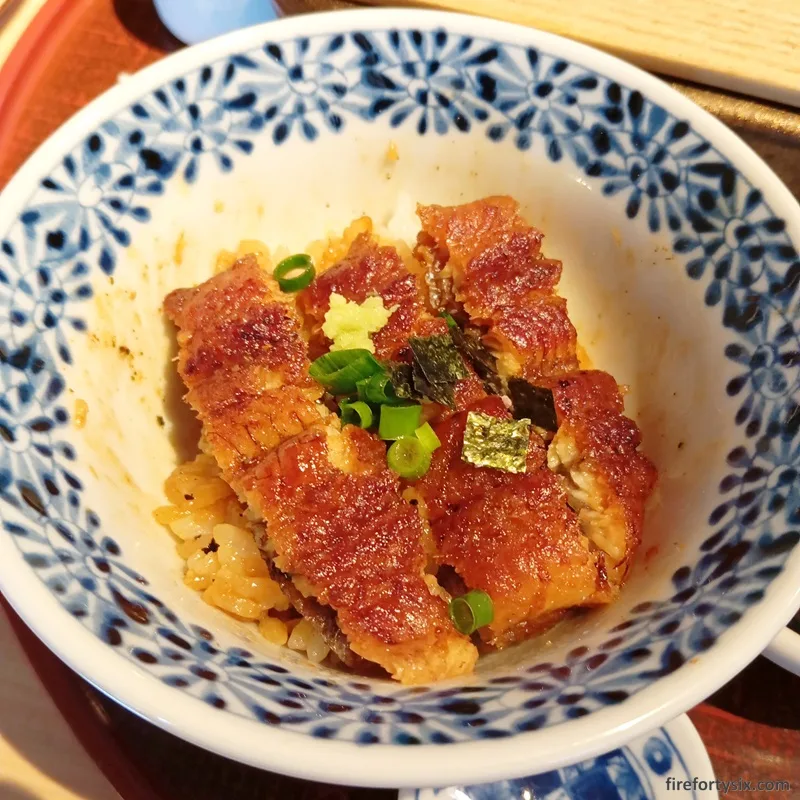
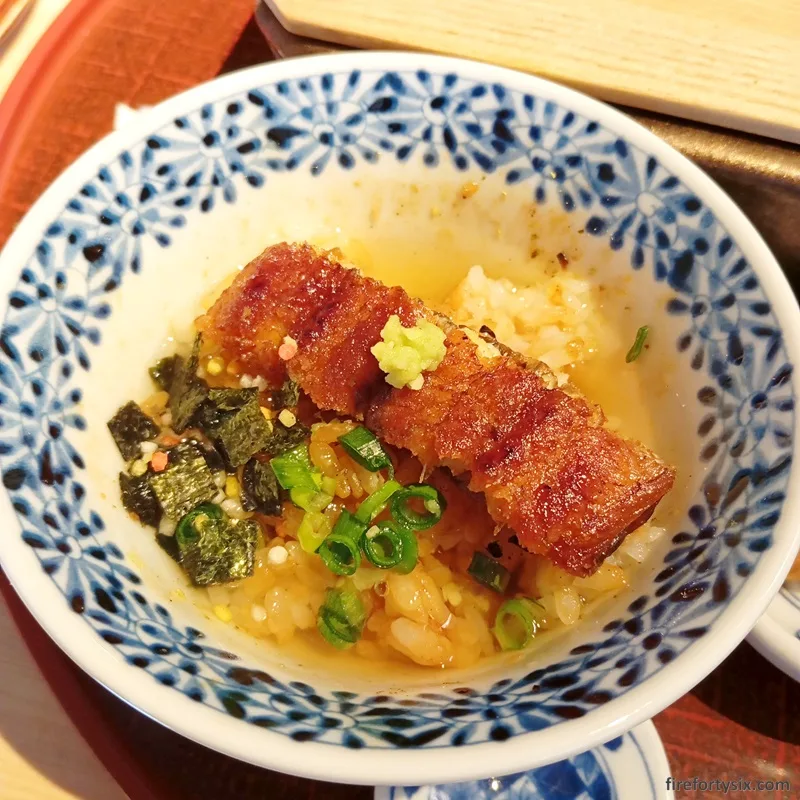
After trying all three permutations, her first choice was just to have the eel on rice, with a light dusting of sansho pepper.
I, on the other hand, enjoyed it with the works i.e. all the condiments plus a generous pour of the dashi chazuke. Probably because it helped to hydrate the eel and gave it more of a juicier texture.
The portions were generous, and we took our time to slowly savour the unagi, cleansing our palates intermittently with our respective choice of alcohol.
Once we were completely sated, we took the wooden token with our table number, reclaimed our shoes and headed downstairs.
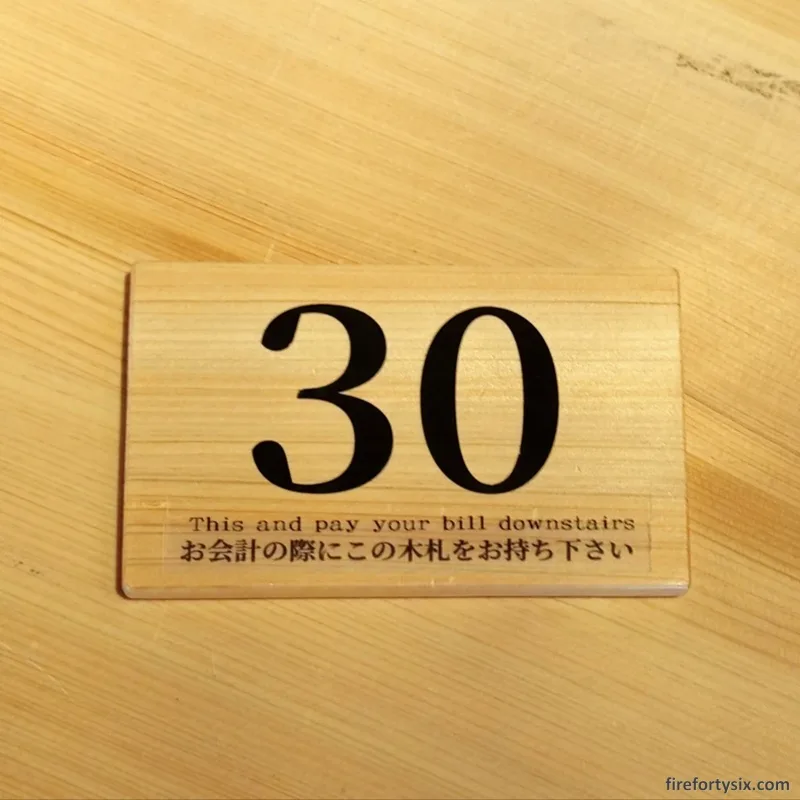
Ota-san was already there waiting for us and promptly processed our payment.
He then proceeded to present his meishi (名刺), or name card, with two hands and ended with a very formal “yoroshiku onegaishimasu” (よろしくお願いします).
It felt a bit strange to be afforded so much courtesy, especially since we were just a couple of gaijin tourists in casual clothes and well-worn sneakers. Though I have to say that we did quite enjoy the royal treatment.
If you’re looking for a classic Kansai-style unagi kabayaki, Unagi Yondaime Kikukawa is a really good choice worth serious consideration.
Not only because ratings on Google (4.6⭐/5.0 | 206 reviews) and Tabelog (3.46⭐/5.00 | 75 reviews) are great. But more importantly, it’s personally recommended by the okami (女将) of Shiraume Kyoto, one of the oldest and most beautiful ryokans in Gion.
